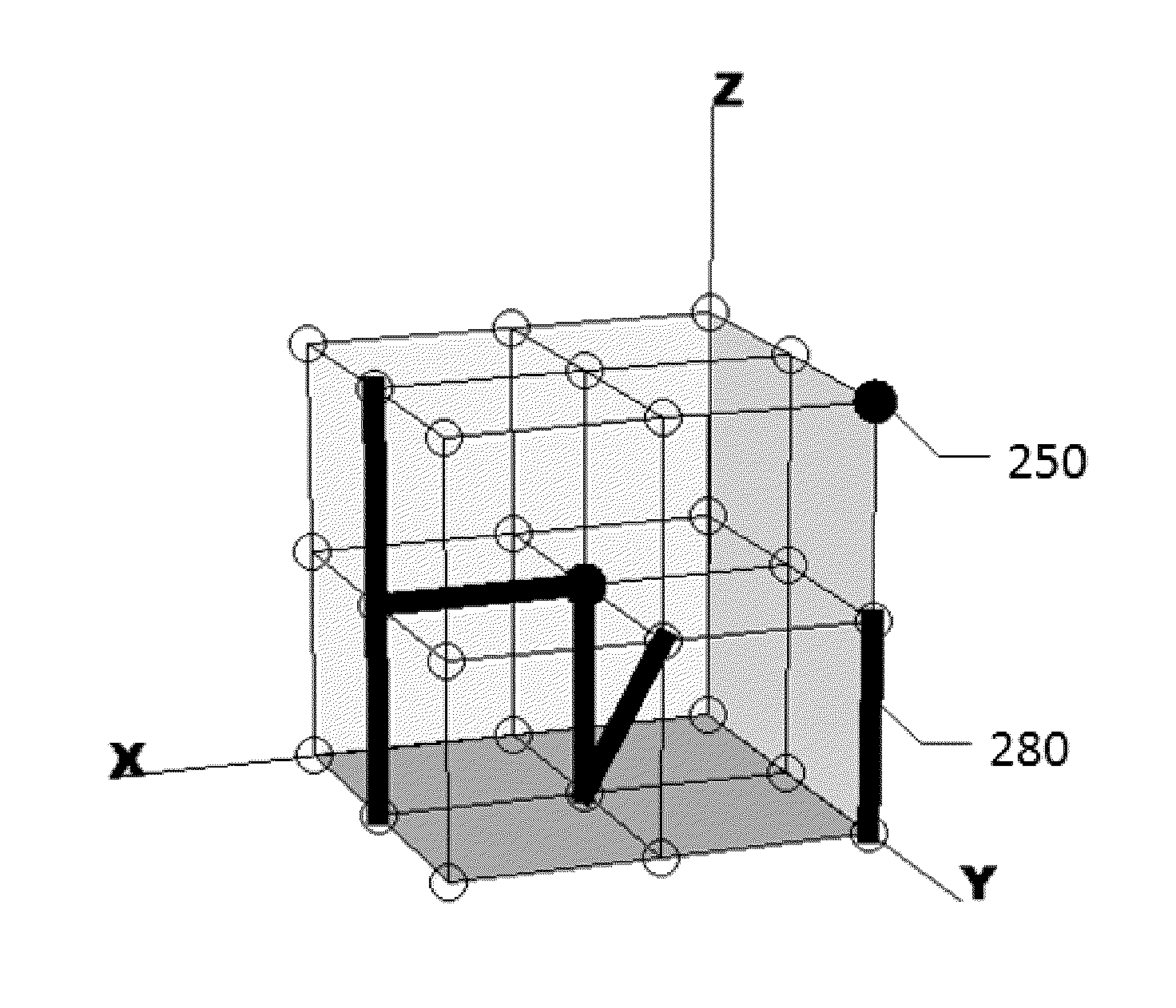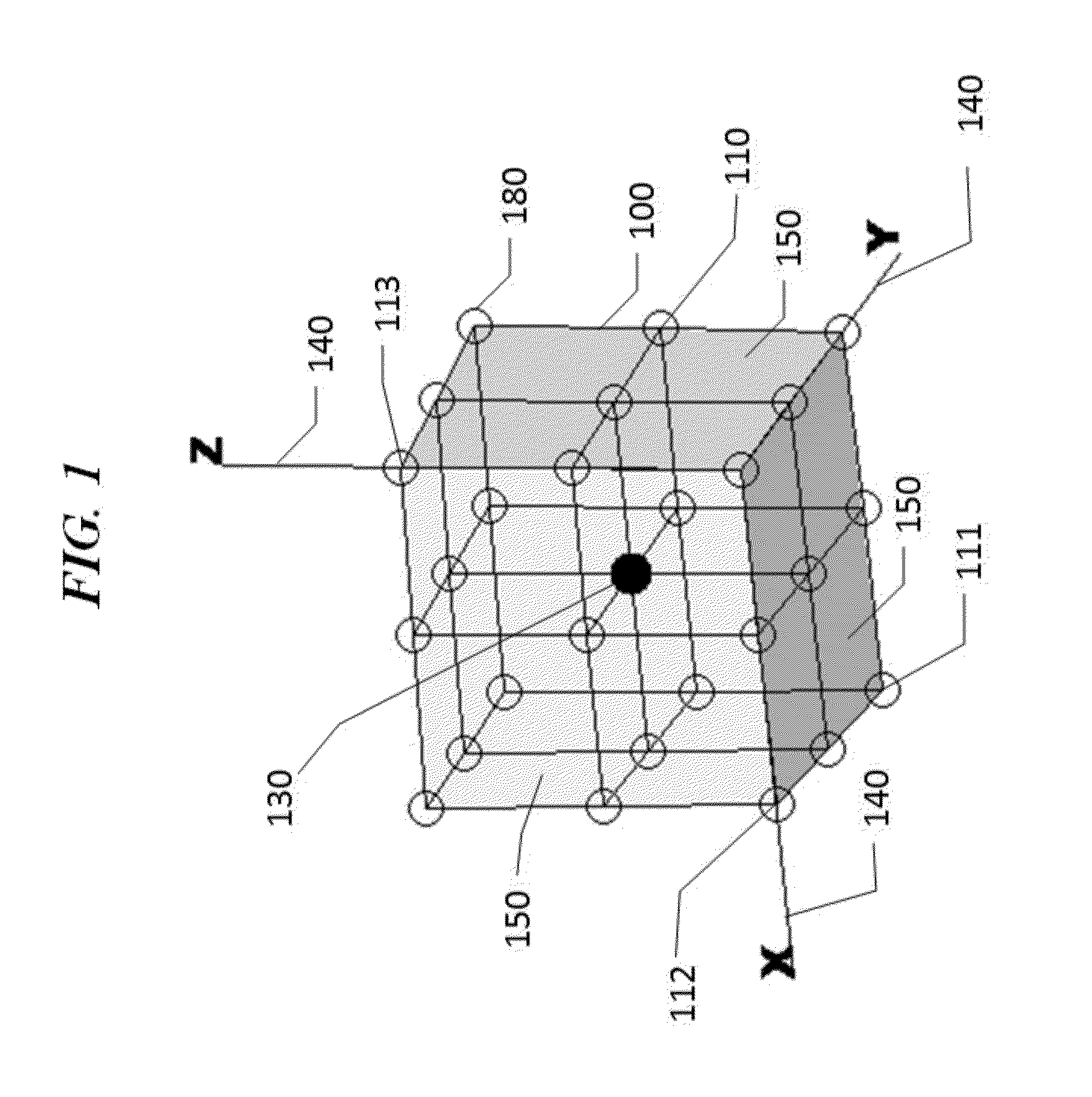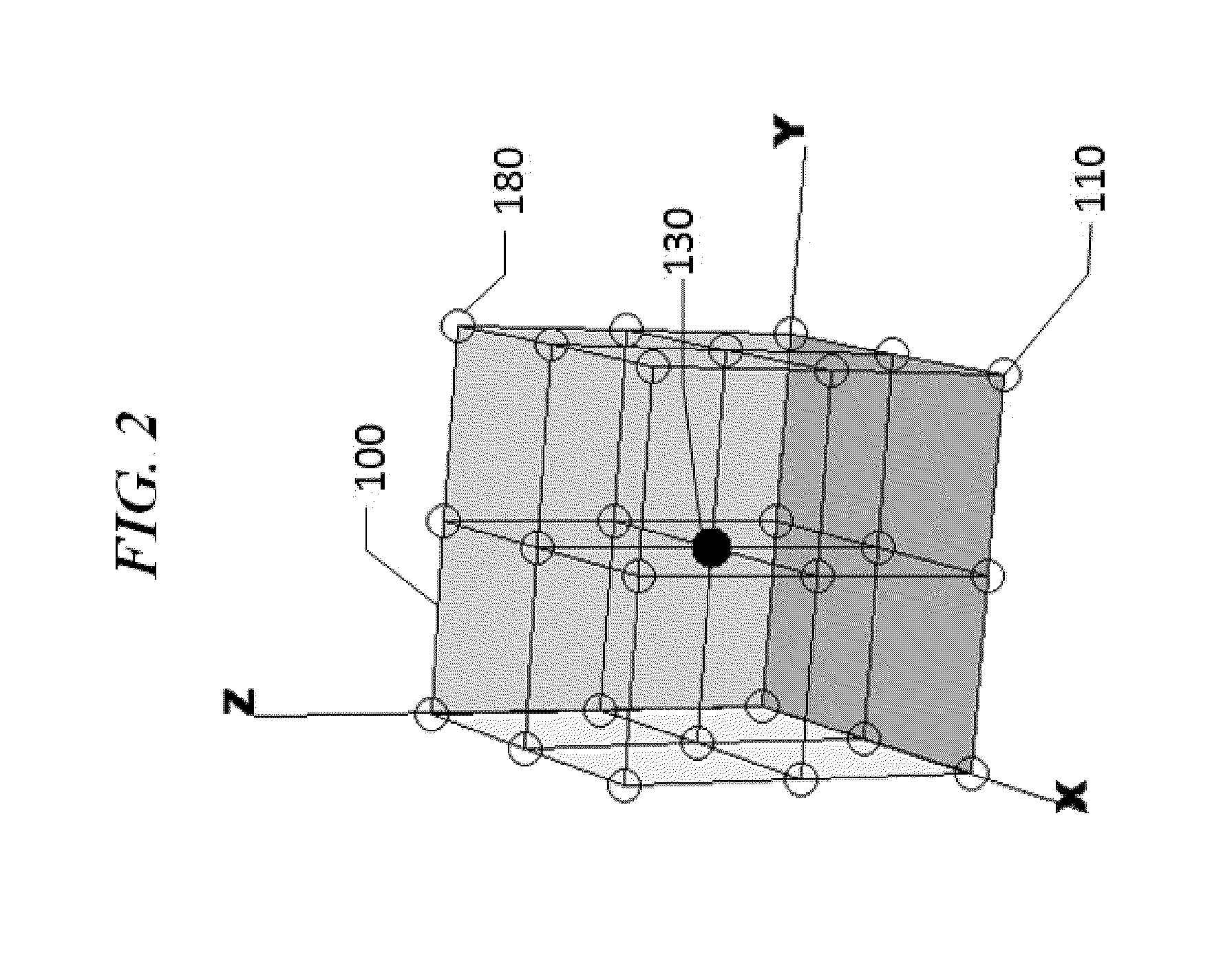3D pass-go
- Summary
- Abstract
- Description
- Claims
- Application Information
AI Technical Summary
Benefits of technology
Problems solved by technology
Method used
Image
Examples
Embodiment Construction
[0031]Referring to the drawings, FIG. 1 shows a login interface, which displays a 3D grid 100. When a user requests to access a restricted resource, a 3D grid 100 is shown. The 3D grid 100 comprises of multiple horizontal lines (multiple lines in the direction of X-axis and multiple lines in the direction of Y-axis) and multiple vertical lines (in the direction of Z-axis). The 3D grid 100 login interface may be displayed on a touch screen of a smart phone or a tablet computer, a screen of a regular computer, a wearable computer such as a smart glasses, or any other display devices. The 3D grid 100 login interface may also be displayed in a real 3D space, with multiple horizontal lines and multiple vertical lines created by, for example, visible (or visible through a special glasses) laser lights or any other means.
[0032]The user is required to touch one or more intersections 110 on the 3D grid 100 as a means of entering his or her password with an input device. The input device coul...
PUM
 Login to View More
Login to View More Abstract
Description
Claims
Application Information
 Login to View More
Login to View More - R&D
- Intellectual Property
- Life Sciences
- Materials
- Tech Scout
- Unparalleled Data Quality
- Higher Quality Content
- 60% Fewer Hallucinations
Browse by: Latest US Patents, China's latest patents, Technical Efficacy Thesaurus, Application Domain, Technology Topic, Popular Technical Reports.
© 2025 PatSnap. All rights reserved.Legal|Privacy policy|Modern Slavery Act Transparency Statement|Sitemap|About US| Contact US: help@patsnap.com



